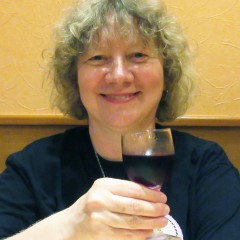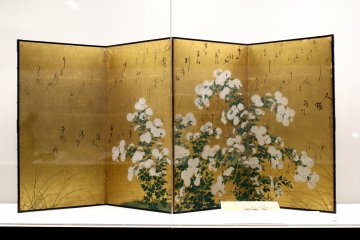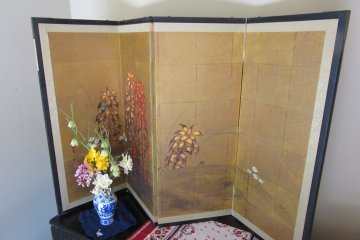The traditional folding screens in Japan are known as byobu. They consist of several interconnected panels which open and fold together like an accordion. The most common type is the six-paneled byobu with a height of around 1.5m and a width of 3.5m.
Introduced from China
Byobu were introduced from China where their name, fingpeng, literally meant 'obstacle to the wind'. The first screens imported from China were in the form of blinds made from bamboo or mats and did not fold. Around the 8th century, the folding screen appeared and were used as interior items in the Emperor's residence during important ceremonies. Nara period byobu consisted of six double-layered silk panels connected by leather or silken cords. The pictures on each panel were framed with silk brocade and placed in a wooden frame. Each picture was an independent work, unrelated to the others on the screen.
Changes in style
Byobu became particularly popular during the Muromachi period where the most common was the two-panel screen. At the same time, thicker paper allowed for a more robust connection between panels. This had the advantage of the screens becoming lighter in weight and also easier to fold. When unfolded, the screen became a vast area for painting, which gave artists the opportunity to create a complete artistic composition across the entire width of the screen. There was also a fashion for using bright colors and a golden background known as kinpaku. In addition to screens made of silk and paper, screens were also made of woven bamboo, cypress wood or reeds and then painted.

New styles, new words
Special terms were used to distinguish between different types of screens. Before the Muromachi period, the term for the number of panels in a screen was sen, and the term jo indicated the number of screens; one (ichi) screen (jo) of six (roku) panels (sen) was called ichijo rokusen.
In the past, byobu were irreplaceable items, with different types and uses. In tea houses, a low double-panel furosaki-byobu screen was used for the ceremony when performed in summer. These were made of carved wood, reed or green bamboo.
Low, 50cm-high screens of two or four panels were called makura-byobu because they were usually placed near the bed, next to the pillow (makura). The screen served as a clothes hanger and a headboard to provide privacy and protection from drafts.
In the 15th &16th centuries, koshi-byobu were popular. Named after a human waist, the screens were about 60cm high. In the days of endless inter-clan warfare, such screens were installed when receiving guests to demonstrate that no one was hiding behind the screen.
In modern interiors, byobu tend to be used as a decoration. However, various traditional and historical byobu can be seen in museums such as the Edo-Tokyo Museum, the Sendai City Museum and many others.










